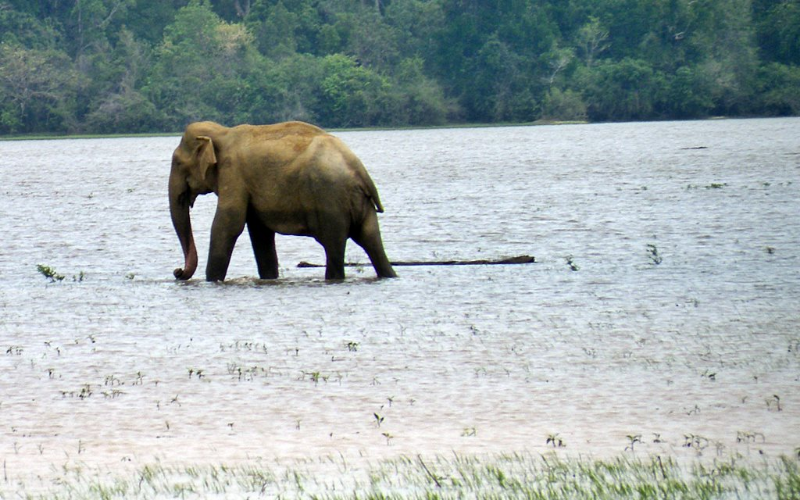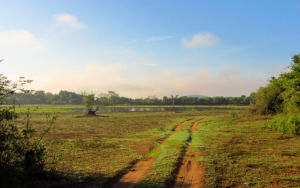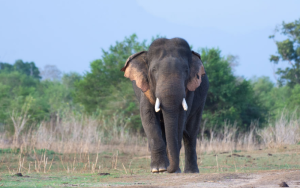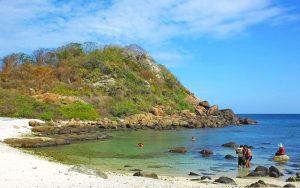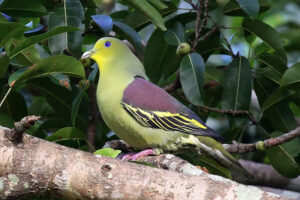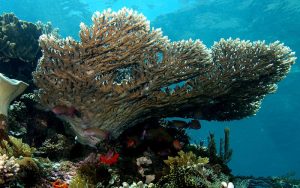Where is Lahugala Kitulana National Park?
Lahugala Kitulana National Park is one of Sri Lanka’s smallest national parks. Despite its small size, the park is an important home for Sri Lankan elephants and unique Sri Lankan birds. The reservoirs of Lahugala, Kitulana, and Sengamuwa are located within the national park and eventually empty into the Heda Oya river. On July 1, 1966, it was classified as a wildlife refuge. On October 31, 1980, the protected area was elevated to the status of the national park. When there, stay tight to your tour guide and listen to the wildlife specialists as they lead you through the routes where you will experience the wonders of wildlife in Sri Lanka.
This park contains three tanks: Lahugala, Kitulana, and Sengamuwa, which eventually merge to form Hedaoya. The Sri Lanka Wildlife Conservation Society has started a project to build an electric fence to safeguard four villages along the park’s southern perimeter. The most serious threats to the park are poaching, logging, fuelwood gathering, and grazing. Lower Uva basin development is a potential hazard to the park since it would increase agricultural area, isolating the park and its elephant herd. A jungle corridor is being proposed to connect the park to the national parks of Gal Oya and Kumana. Environmentalists criticized a proposed canal that would have passed through the park. They stated that allowing construction not just within the park but also beyond one kilometer from the park is illegal.
Best Time to Visit Lahugala Kitulana National Park
November, December and February
Wildlife You Might See in Lahugala Kitulana National Park
Wild Species knowledge is quite sparse and therefore represents a significant opportunity for any future researcher to investigate the area and conduct ecological research in order to determine the presence of wild species in the area. If anyone is interested, please share your findings with us so that we may incorporate them into this page in order to educate our future generation.
Birds
Mammals
Reptiles
Fish
Physical Features of Lahugala Kitulana National Park
The average rainfall is about 1,650 millimeters (65 in)
The lowest and highest temperatures are about 27 Celsius [January] and 33 Celsius [May]
Fauna Diversity of Lahugala Kitulana National Park
Elephants have long used this national park as a feeding site. A herd of 150 individuals is drawn to the Lahugala tank by the Sacciolepis interrupta grass. Other mammals found in the park include the endemic toque macaque, tufted gray langur, sloth bear, golden jackal, rusty-spotted cat, fishing cat, Sri Lanka leopard, wild boar, Indian muntjac, Sri Lankan axis deer, Sri Lankan sambar deer, Indian pangolin, and Indian hair.
The great white pelican, purple heron, painted stork, lesser adjutant, Anas spp., white-bellied sea eagle, grey-headed fish eagle, common kingfisher, stork-billed kingfisher, and white-throated kingfisher are among the many wetland birds found in Lahugala Kitulana. The marsh has also been visited by a spotted pelican, an Asian openbill, and a woolly-necked stork. The final documented sighting of the knob-billed duck, which is now presumed to be extinct in Sri Lanka, occurred here. The park is home to two rare birds: the red-faced malkoha and the Sri Lanka spurfowl.
Endemic The national park’s amphibians include Bufo atukoralei, Fejervarya limnocharis, Polypedates maculatus, Banded bull frog, and Microhyla rubra. Among the prominent reptiles are the Python molurus, Rat snake, Chrysopelea spp., Boiga spp., Dryophis spp., and Russell’s viper. Melanochelys trijuga and Lissemys punctata are two freshwater turtles that live in Lahugala’s tank. Clarias brachysoma, an endangered fish species, also lives in the tank.
Flora Diversity of Lahugala Kitulana National Park
The vegetation of the national park is classed as Sri Lanka dry-zone dry evergreen forests. Elephants feed primarily on the dominant grass species sacciolepis interrupta. Drypetes sepiaria, manilkara hexandra, berrya cordifolia, vitex pinnata, chloroxylon swietenia, and the golden shower tree are among the park’s common floral species.
Summary
Sri Lanka is blessed with an abundance of natural beauty and rich biodiversity. One of the country’s hidden gems is the Lahugala Kitulana National Park. Located in the Ampara district, this national park covers an area of 1555 hectares and is home to a vast array of flora and fauna.
The park is divided into two sections: Lahugala and Kitulana. The Lahugala section is famous for its large herds of elephants, while the Kitulana section is home to a variety of bird species, including the Sri Lankan junglefowl, the national bird of Sri Lanka. The park also boasts several water bodies, such as the Lahugala Reservoir, which provide a habitat for aquatic animals and birds.
Visitors to the park can enjoy a range of activities, including birdwatching, jeep safaris, and nature walks. The park is open from 6 am to 6 pm, and the best time to visit is between December and February when the weather is dry and the animals are more active.
One of the unique features of the Lahugala Kitulana National Park is that it is relatively untouched by tourism. Unlike some of the more popular national parks in Sri Lanka, such as Yala or Udawalawe, Lahugala Kitulana receives fewer visitors, which means that the natural habitat remains largely undisturbed.
The park’s management is dedicated to preserving the natural environment and promoting sustainable tourism. They work closely with the local community to ensure that the park’s resources are used in a responsible and sustainable manner. Visitors to the park are encouraged to respect the natural habitat and follow the park’s rules and regulations.
Conclusion
The Lahugala Kitulana National Park is a hidden paradise that offers visitors a unique and authentic wildlife experience. Its pristine environment and rich biodiversity make it a must-visit destination for nature lovers and wildlife enthusiasts. By promoting sustainable tourism, the park’s management is ensuring that this natural treasure is preserved for future generations.

